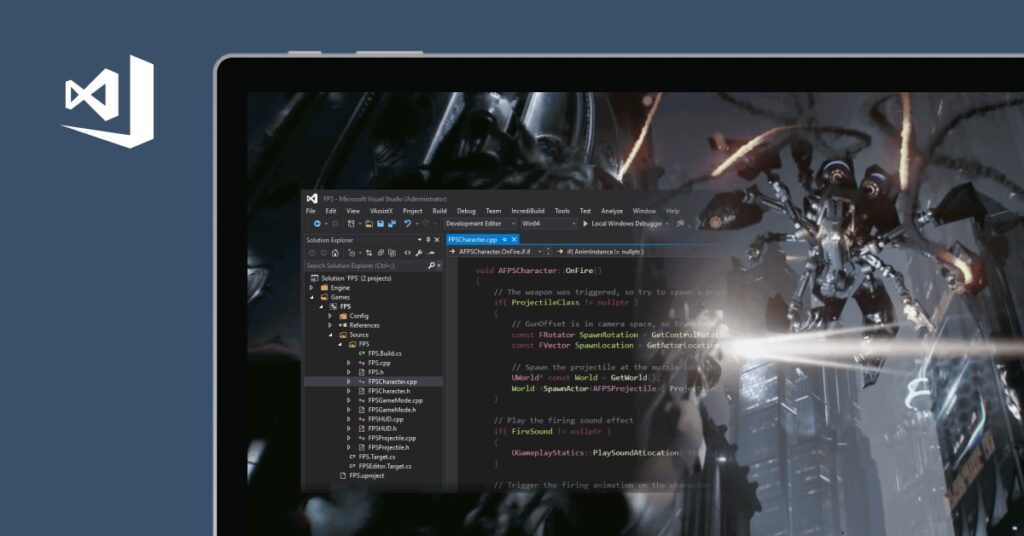The game development process involves a collaboration of artists, programmers, sound designers, and other professionals. The process begins with an idea that is turned into concept art and a design document, which outlines the game’s storyline, characters, environments, objectives, and gameplay mechanics. Game developers use programming languages and game engines to create the code and tools needed to bring the game to life. Visual assets are created using programs such as Photoshop and Maya, while sound designers use software like Pro Tools and Logic Pro to create sound effects and composers use Ableton Live and FL Studio to create original music. Testing is done to ensure the game meets quality standards before it’s released, and the development team provides support and releases patches after the release.
Inside the Game Development Process: Understanding the Tools Used to Create Your Favorite Games
The video game industry has come a long way since the days of Pong and Space Invaders. Today, games are interactive, immersive experiences that transport players to new worlds and allow them to become the heroes of their own stories. But have you ever wondered what goes into making your favorite games? The game development process is a complex web of art, technology, and creativity. In this article, we’ll take a look at the tools and processes that game developers use to bring their ideas to life.
Concept Art and Design
Before a single line of code is written or a character is modeled, a game begins with an idea. This idea is then turned into concept art, which is a series of illustrations that provide a visual representation of what the game will look like. Concept art can range from sketches and drawings to fully rendered 3D models.
From there, the concept art is used to create the game’s design document. This document outlines the game’s storyline, characters, environments, objectives, and gameplay mechanics. The design document is the roadmap that guides the development team as they create the game.
Programming Languages and Game Engines
Once the design document is complete, the real work begins. Game developers use a variety of programming languages to create the code that makes games work. Some of the most common programming languages used in game development include C++, Java, and Python.
In addition to writing code, game developers also use game engines to create their games. A game engine is a software framework designed to help developers create video games. Game engines provide a range of tools and features, such as physics engines, animation tools, and scripting languages, that make it easier to develop high-quality games.
Art and Animation
In addition to writing code, game developers must also create the game’s visual assets, such as characters, environments, and textures. This is where artists and animators come in. Artists use programs like Photoshop and Maya to create 2D and 3D assets, while animators use software like Blender to create animations.
Creating assets for a game is a time-consuming process that requires a lot of skill and attention to detail. Artists and animators work closely with the development team to ensure that their creations are in line with the game’s design document and that they function properly within the game engine.
Sound Design and Music
Sound design and music play a crucial role in creating a truly immersive gaming experience. Game developers work with sound designers and composers to create the game’s audio assets, such as sound effects and music.
Sound designers use software such as Pro Tools and Logic Pro to create and edit sound effects, while composers use software such as Ableton Live and FL Studio to create original music. Like visual artists, sound designers and composers must work closely with the development team to ensure that their creations fit within the game’s overall design.
Quality Assurance and Testing
As the development process nears completion, the game is thoroughly tested to ensure that it meets the quality standards set by the development team. Quality assurance (QA) testers play a crucial role in this process.
QA testers are responsible for finding and reporting any bugs or issues they encounter while playing the game. They test the game on a variety of systems, from high-end gaming PCs to consoles and mobile devices, to ensure that it works correctly on all platforms.
The Final Product
After months, sometimes years, of hard work, the game is finally ready for release. The development team works with publishers to create marketing materials and to coordinate the release date. Once the game is released, the team remains on hand to provide support and to release patches to fix any remaining bugs.
Conclusion
The game development process is a collaboration between artists, programmers, sound designers, and many others. Each member of the development team brings a unique set of skills to the table, and it is this combination of talents that makes video games the immersive and engaging experiences that we all love.
Whether you’re a gamer yourself or just curious about the process, we hope this article has given you a better understanding of how games are made.
